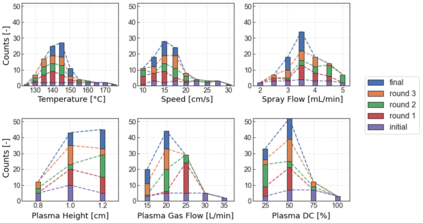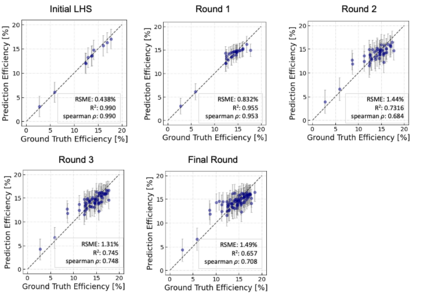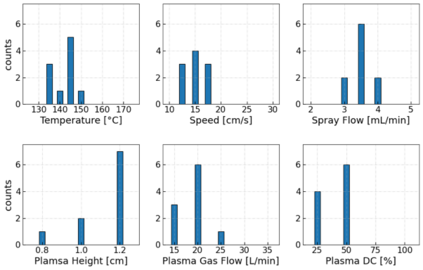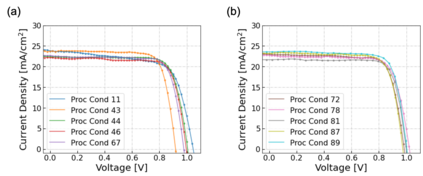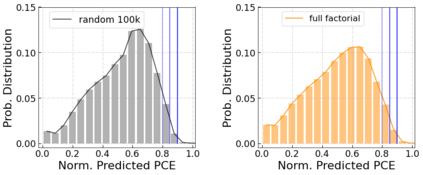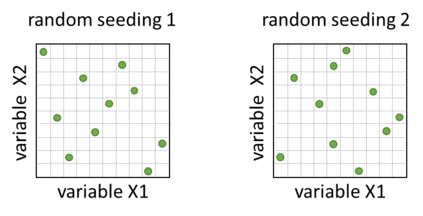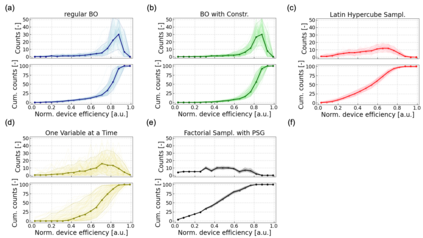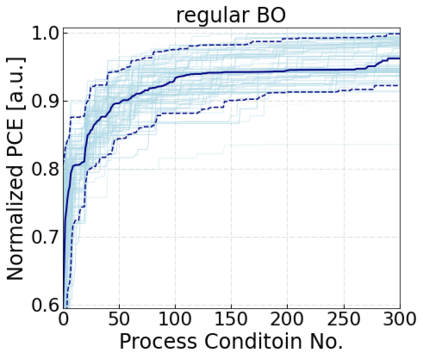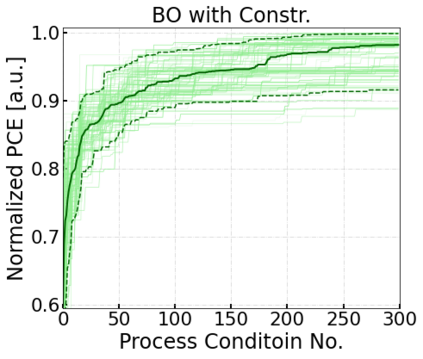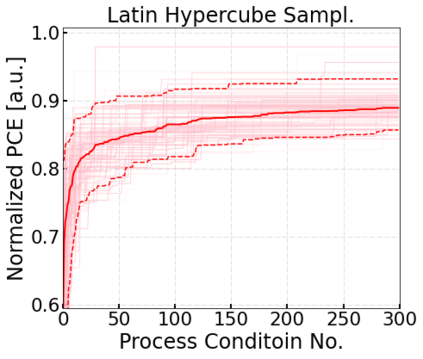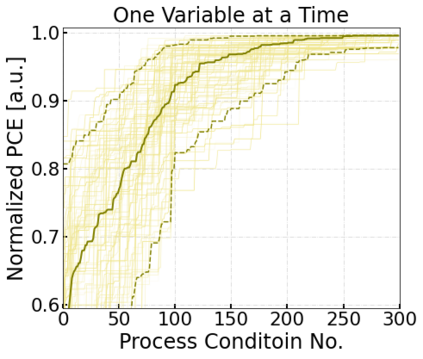Perovskite photovoltaics (PV) have achieved rapid development in the past decade in terms of power conversion efficiency of small-area lab-scale devices; however, successful commercialization still requires further development of low-cost, scalable, and high-throughput manufacturing techniques. One of the critical challenges of developing a new fabrication technique is the high-dimensional parameter space for optimization, but machine learning (ML) can readily be used to accelerate perovskite PV scaling. Herein, we present an ML-guided framework of sequential learning for manufacturing process optimization. We apply our methodology to the Rapid Spray Plasma Processing (RSPP) technique for perovskite thin films in ambient conditions. With a limited experimental budget of screening 100 process conditions, we demonstrated an efficiency improvement to 18.5% as the best-in-our-lab device fabricated by RSPP, and we also experimentally found 10 unique process conditions to produce the top-performing devices of more than 17% efficiency, which is 5 times higher rate of success than the control experiments with pseudo-random Latin hypercube sampling. Our model is enabled by three innovations: (a) flexible knowledge transfer between experimental processes by incorporating data from prior experimental data as a probabilistic constraint; (b) incorporation of both subjective human observations and ML insights when selecting next experiments; (c) adaptive strategy of locating the region of interest using Bayesian optimization first, and then conducting local exploration for high-efficiency devices. Furthermore, in virtual benchmarking, our framework achieves faster improvements with limited experimental budgets than traditional design-of-experiments methods (e.g., one-variable-at-a-time sampling).
翻译:在过去十年中,在小型实验室设备电流转换效率方面, Perovskite光伏伏(PV)实现了快速发展;然而,成功的商业化仍然需要进一步开发低成本、可缩放和高通量制造技术。开发新制造技术的关键挑战之一是用于优化的高维参数空间,但机器学习(ML)可以很容易地用来加速光伏渗透率的缩放。在这里,我们提出了一个ML指导的制造流程优化连续学习框架。我们运用了我们的方法,在环境条件下,快速喷雾等离层处理(RSPP)薄薄薄膜处理技术(RSPPP)需要进一步发展低成本、可缩缩放和高通量制造技术。在测试100个工艺条件下,我们展示了18.5%的效率,这是发展新制造高维度光度光度的超速测试工具。 我们的模型首先通过三个创新(a) 将弹性的实验性知识引入了前期设计流程,然后通过实验性数据定位,将数据引入了前期的精确性数据定位。




